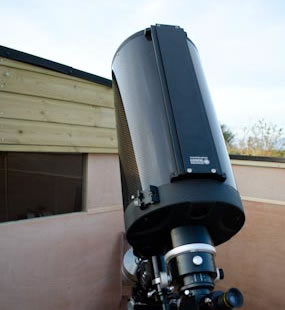
Altair Astro 254mm F/8 Ritchey-Chrétien
Up until now, the largest scope I’ve owned was a 200mm Meade LX90. While the aperture was nice for generally observing most objects, I did find contrast disappointing compared to my TMB APO refractor. Coupled with the corrector plate dewing up unless heaters were used, I wanted something a little different as a big scope to use for observing.I had heard a lot of good things about the Altair Astro range of RC’s. On the plus side there was the lack of a corrector plate; a carbon fibre tube, which keeps weight down, and a much flatter and brighter field at a native f/8 should I wish to do some imaging with at some point. The fact this scope is made in China and is imported by a number of sources such as Astro tech in the US and Altair Astro here in the UK, didn’t put me off. While the scope is well made, the standard focuser is pretty rough. While it is quite capable of carrying a diagonal and eyepiece, it starts to struggle with my Van Slyke Turret and presumably with my SBIG XM2000 camera as well. There was an opportunity to upgrade the focuser on purchase with a 3″ Feather touch model, which I now wish I had done. These are however unbelievably expensive and I now see that Ian King is offering them with a more sensibly priced Moonlight dual speed jobby, which I think I might plump for in 2013.The views through the scope are great though and I’m really happy having that extra 50mm of aperture. Collimation is a doddle when you finally decided on a method that suits you. It also stays collimated except if you take it off the mount, when you will need to re-adjust. While the views through it are not as pin sharp and bright as an APO, it beats the Cassegrain design hands down, so I’m chuffed to bits with my choice.
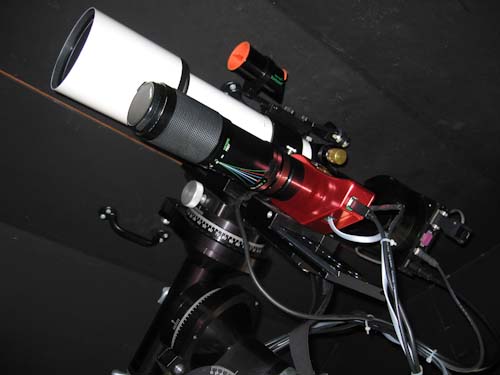
TMB 80 f/6 APO
I love this scope so much. While it was originally bought as a wide field imaging scope, this little peach of a scope make for wonderful views using an eyepiece. Stars are pinsharp and the image is very bright and contrasty. Bearing in mind the small aperture, this scope holds up well with the 4mm TMB monocentric eyepiece when observing the planets and give as nice field of view for those open clusters and nebulae that are too big to see in their entirety through the 254mm R.C.
For imaging I use this scope with a Televue 0.8 TV-85 focal reducer, which gives me a nice flat field and turned the scope into an f/4.8 which widens the field and reduces the exposure times a little.
The 2″ Feather touch focuser is a dream to use with absolutely no flexiture or slop. The friction device even when heavily loaded, doesn’t affect the smooth and precise focus when using the 10:1 secondary focuser knob.
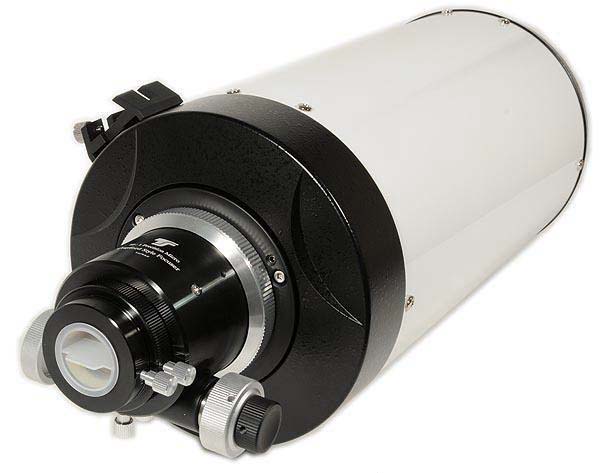
Altair Astro 150mm F/9 Ritchey-Chrétien
Having decided I wanted something with a little more aperture and focal length than my TMB, my initial thought was to find a 100mm – 125mm APO or a quality doublet refractor. However, something of decent quality was going to be in the ‘silly money’ range, so the idea was put on hold for a bit. That was, until a friend suggested I try his newly aquired Altair Astro 150mm f/9 R.C. I had seen and looked through it at one of our star parties this year, but never really thought about it as something that would fit my requirements – until now.
Already owning Altair Astro’s 254mm version, I was happy with the quality – well apart from the standard crappy focuser – so decided that being just shy of £400 the choice really was a ‘no brainer’. While not quite as desirable as a really nice APO, the 150mm aperture and 1370mm focal length provides a nice gap filler between the big R.C and the 80mm TMB. It also has the advantage of being really compact, making it a really nice travel scope.
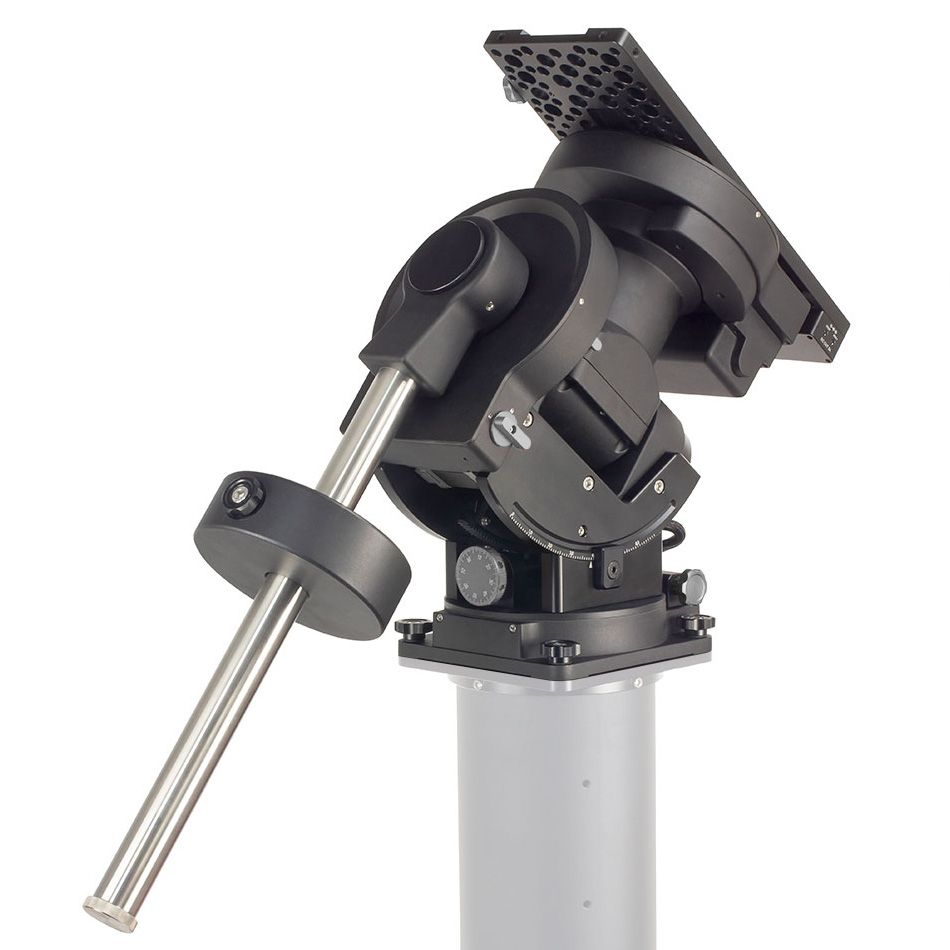
iOptron CEM 120-EC
With my G11 – or to be more precise the Gemini controller – playing up, it was time to retire the G11 and find a replacement. I originally decided to go for an EQ8 but during Covid, you couldn’t find these new anywhere. In the end, my only choice was this little puppy. This thing is huge and very heavy, but with the RC, the TMB and a spectrometer, weight is still within this mount’s capabilities.
Without even trying I was getting 0.7 arc/sec guiding and on a really good night this went down to 0.4 ish over a 14-minute period.
As of the Summer of 2023 stopped using a guider as the encoder on RA does such a good job without any external assistance. Without I guider I have no idea what my errors are, but with 120 sec subs Pixinsight is reporting stars with an average eccentricity of less than 0.45.
I love the ‘through mount ‘cabling for both USB and power. Unlike the Losmandy, there are now no trailing cables to get caught on something when slewing.

Losmandy G11 Mount with Gemini Go-To
Like the TMB, the mount was chosen with Astrophotography in mind. In 2004 when I bought it, there were only four premium mounts available. The G11, the Astrophysics AP1200, Software Bisque Paramount and the Takahashi GM20. The Paramount and AP mounts were ruled out as they were way beyond my budget. The Takahashi while nice just didn’t seem to be available in the UK, and once imported also became too expensive. In the end I plumped for the G11. None of the Losmandy importers then, had stock, so I eventually ended up buying direct from Losmandy in the States.
The mount is fitted with the Gemini control system. While I’m now used to the menu system, I did find it wasn’t very new user friendly and still have to think very carefully when selecting certain options. For example: If you try and bypass the start up messages when you first turn it on, by pressing the Right Button and you press one too many times, you find you’ve selected Cold Start instead of Warm Start. The Cold Start wipes your pointing modelling so you have to go through that whole process all over again. While ‘Are you sure’ messages on the PC can be annoying, this is something that is really needed here, as building a good pointing model can take 20 mins or so – time that could be spent observing.
My only other gripe is after a few weeks of non-use, sometimes Gemini throws a wobbly and ends up pointing to the observatory floor when plainly the star you told it to go to, is overhead. Most of the time this is due to Gemini’s internal clock being way out after not being used for some time, but there have been times when the modelling gets wiped for no reason and you have to set everything up again from scratch. It’s not down to a flat BIOS battery either!
Apart from these two annoying problems, the mount performs well. Pointing accuracy with the TMB always placed a star in the CCD’s field of view with any slew up to 120 degrees, and just out of the field when the slew was larger than that. With the R.C things aren’t quite as accurate and if I were still imaging, I would have to use the high resolution feature to get a star on the chip. For visual work though, a slew anywhere will always place the go-to star within the FOV of my 40mm eyepiece.
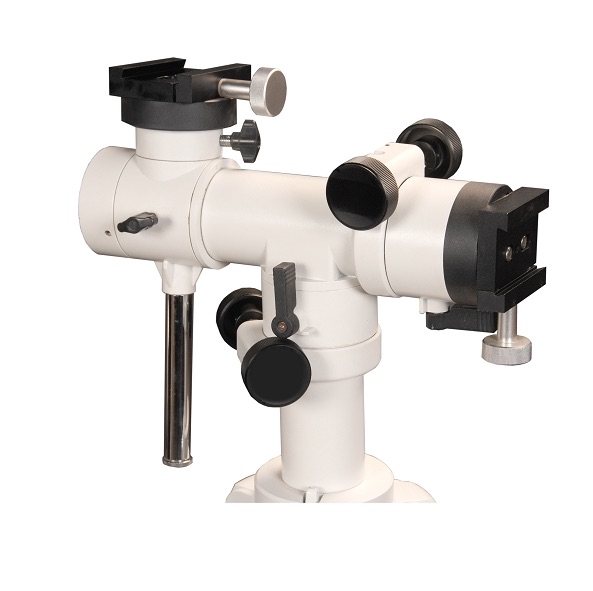
Sky-Tee 2 Alt/Az Mount
While the Altair Astro Sabre Mount is great for star hopping, the stiction in the bearings starts to become a problem when you add a heavier scope. My TMB80 wasn’t a problem, but with the long focal length 150mm RC, I was beginning to find that precisely centring the object would cause you to overshoot the target sometimes. The other problem is with this scope and the Van Slyke turret fitted, it was impossible to balance the scope sufficiently to allow the friction applied the altitude axis, to be free enough to be able to move the scope smoothly. While mildly annoying this wasn’t really a big problem, until I saw a picture of the Skywatcher Sky-Tee 2 mount. My problem was solved.
The SKYTEE-2 is a heavy duty alt-azimuth mount capable of holding two telescope tubes of up to 15Kg each in parallel. A Skywatcher/Vixen type dovetail saddle plate is included on each side of the mount. Precise manual slow motion controls are provided on each axis . A counterweight bar is also included that accepts Sky-Watcher counterweights. Compatible with the Sky-Watcher 1.75″ stainless steel tripod supplied with the EQ5 and HEQ5 Equatorial mounts.
It’s very nicely made, but the person who quality controlled mine before in was sent out, must have been off that day. Two of the three grubscrews that hold the vertical counterweighted size, were loose and the third that should have been there wasn’t. The whole caboodle slipped on the shaft as soon as I fitted the 150mm RC on it. The grub screws just rely on their points digging into the shaft – which is pretty naff engineering, so I drilled three 2mm holes below the grubscrews to allow them to provide a hard mechanical fit.
Apart from these couple of niggles, I’m very happy with its performance. The clutches on both axes allow large slews across the sky and when locked down, the geared knobs allow precise control for moving short distances and centring. Being worm and gear drives, the scope can be quite a long way off balance, but the scope stays pointing exactly where its put.
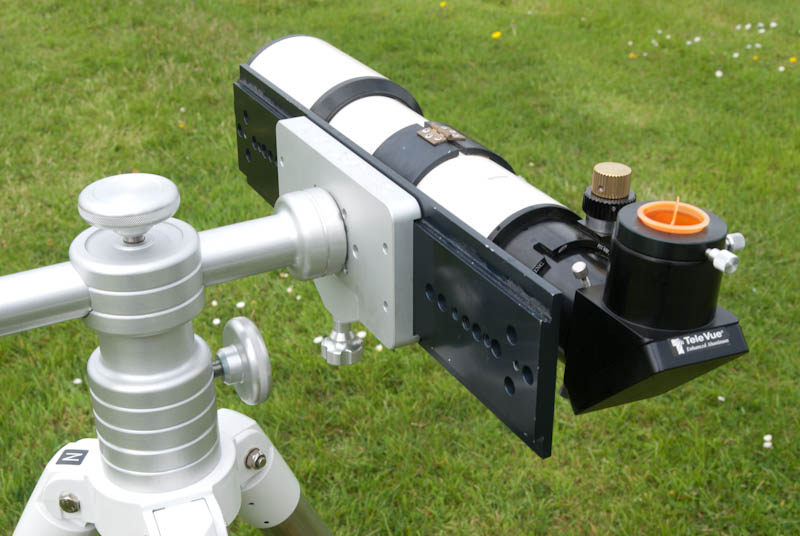
Altair Astro Sabre Mount
While not exactly cheap with all the accessories I added, it has proved perfect for the job. Made in Aluminium, the assembly sits on top of any tripod with a 10mm threaded head. While I could have saved £100 and used by carbon fibre tripod, I decided the weight of their Stainless Steel jobby would make for a much more stable platform. The ALT and Az axis bearings feel as though they are running on ‘Delrin’ type bearings and with the adjusting knobs loosened right off, allow the scope to be moved where needed and stay there. There is just the right amount of friction in these bearings to make the action feel like a really well made Dobsonian. In practical use when focusing you need to apply a little friction to both axes by tightening the knobs a tad so the scope doesn’t move off target. The amount of friction you get is very controllable, so can be fine tuned to suit your setup.
The horizontal bar is offset, which would allow a large scope to be fitted, which will when clear the tripod legs when viewing near the Zenith. I did buy the Stainless Steel counterweight shaft and two counterweights just in case. For the TMB 80 these are not needed, but Altair Astro say they have fitted a 250mm Newtonian with the appropriate counterbalancing and found the set up perfectly useable.
All in all, I’m really happy with the set up. It doesn’t take up too much room in the car, can be set up quickly, and for all but the shortest eyepieces, is a doddle to use. It also acts as a very good terrestrial mount , so doubles up for something like for Bird watching (or spying on the neighbours ) during the day.

Van Slyke Engineering Turret
Until I got in serious observing, I thought this was a hugely expensive and unnecessary bit of kit. However, when you use one, you realise that having to take out and replace an eyepiece whenever you want to change your field of view is a huge pain and very time consuming. Having used one since mid 2012, I would not be without one now. Mine was bought used from a fellow Astronomer for a bargain basement price, but even new it’s worth every penny – or cent. I’m now sorely tempted to update to one with the built in filter slot, so I don’t have to change filters on individual eyepieces. If I’m going to do that, I would go for the HEX2 version which takes 2″ eyepieces and has the filter draw. That way I can get a decent 2″ wide field eyepiece that doesn’t suffer from a small diameter field stop that I have with my Meade 40mm Series 4000 at the moment .
In September of 2014 finally got round to mating the Brightstar 2″ filter wheel, that I acquired in 2013, to the Van Slyke Turret. This contains the Astronomik 2″ OIII and UHC filter, as well as an el-cheapo Orion 13% ND filter. The fourth slot is kept open for an for an unfiltered view.

ALPY 600 with Guider and Calibration Modules.
Probably the best way to get into Spectroscopy if you don’t want to faff around with a Star Analyser grating or the 3D Lowspec. Like astrophotography, this unit needed a lot of very careful setting up and adjustment, but once dialed in, I never had to touch it again.
My only real gripe is the size of the mirror in the guiding module. The FOV it presents is too small to allow you to get a plate solve off your guide camera to ensure that what you think is your target star on the slit, is the correct one. In the end, the only way to solve this problem, was to fit a flip mirror on the front and use my ASI1600 to plate solve my target star on the slit. This system worked a treat.
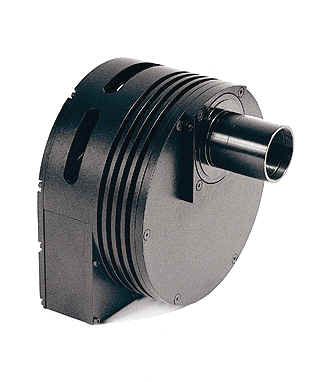
SBIG ST-2000XM
The KAI-2000M CCD is a 2 mega pixel progressive scan detector with an active image area of 1.92 million pixels. The active image area is 1600 x 1200 pixels at 7.4 microns. The camera is self guiding using it’s own TC-237H chip and while this is good if you can find a guide star in the field of view, it certainly causes problems when using my 6nm passband H-alpha filter, which on faint stars causes very long guiding exposures. The Anti blooming chip is a real boon, so no bleeding stars and when coupled with my TMB 80mm refractor, gives 3.17 arc second per pixel imaging, which is great. No so good if I I use it on the R.C, as un-binned I get .75 arc seconds per pixel, which is a bit under sampled. Binning 2×2 gives 1.41 a rec seconds per pixel, which is a a little more usable. If I ever get back into imaging in a serious way again, I would upgrade to a camera in the 6 to 8 megapixel range, which will allow much more flexibility.
The camera is cooled and in the UK in the summer, I can get the temperature down to -10C easily. Another plus point is the chip is sealed off from the environment, so providing you dry out the desiccant plug regularly, I never suffer from icing except in very humid conditions when pushing the cooling.
The camera is fitted with the SBIF CFW-8 This camera has now been retired and replaced by the ZWO cameras below.
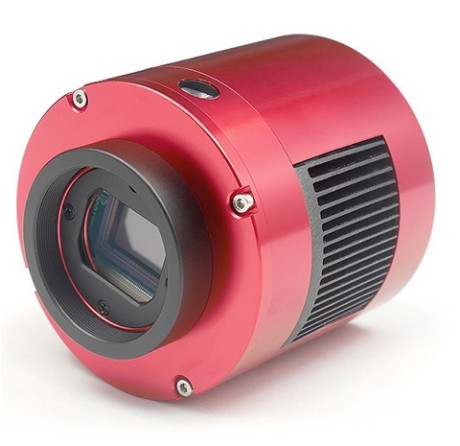
ZWO ASI 1600 MM Pro Mono
In March of 2020 I got back into astrophotography. In the 20 years since I acquired my SBIG camera technology has undergone some massive changes. The sensors are so much more sensitive not to mention being a lot less expensive. I initially wanted to use this camera to assist in my visual work using Sharpcap’s live stacking feature, but seeing how easy it was to get really detailed images in a relatively short time, I’ve taken up the the whole deep sky thing really seriously.
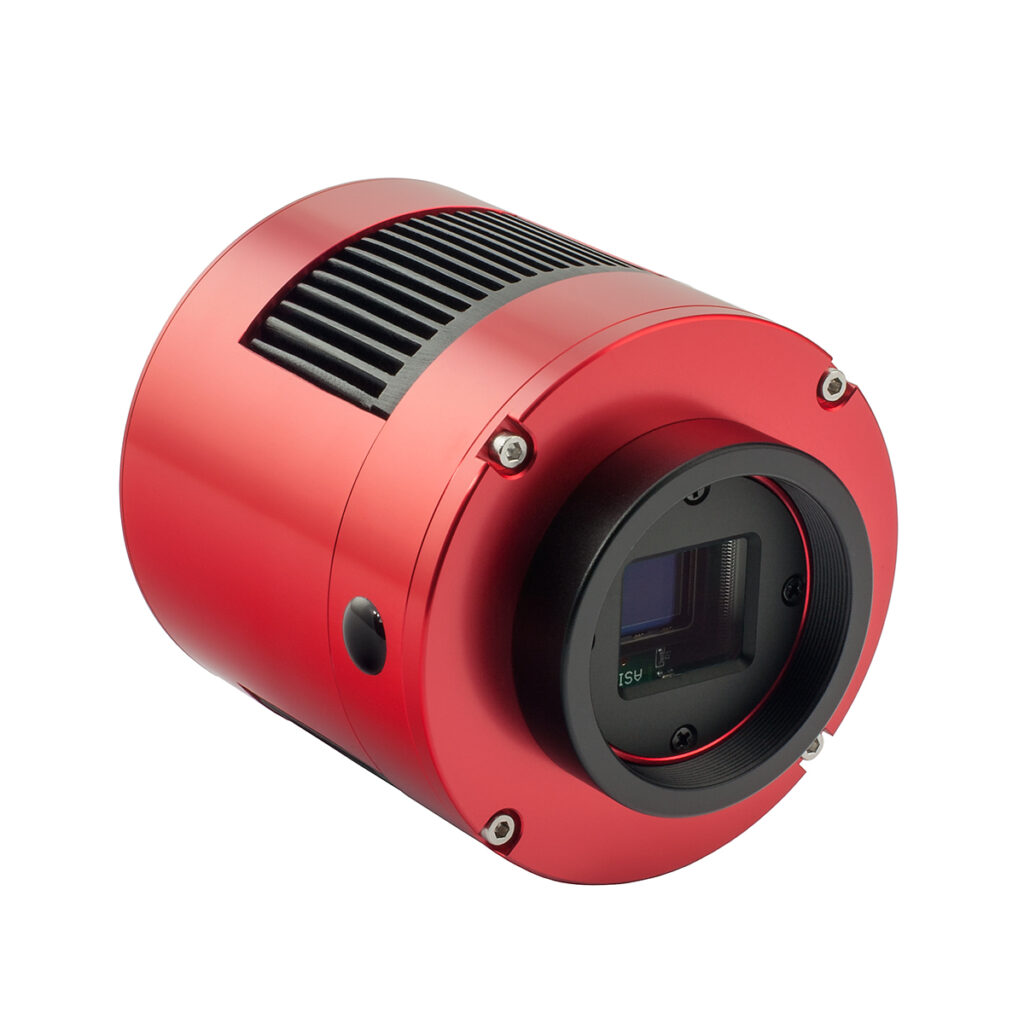
ZWO ASI 183MM Pro Mono
Acquired at the same time as the ALPY spectrograph and was one of the recommended cameras to use for this discipline . I have also used this as a dedicated astro imaging camera and despite a little amp glow, it performs well for this as well.
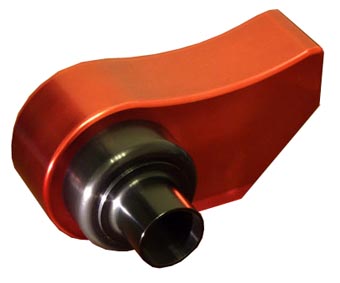
Atik 16H Guide Camera
Wanting to do away with the self guiding chip on the SBIG 2000-XM, I decided to my guiding through a separate scope with its own guide camera. At the time cheap CCD camera were few and far between, so brought an Artemis 285 kit. Although inexpensive, I made a right balls of soldering the chip to the board and ended up giving the camera to a friend and replaced it with the ATIK. This is essentially the commercial version of the Artemis and it’s proved ideal and very reliable. This camera has now be retired.
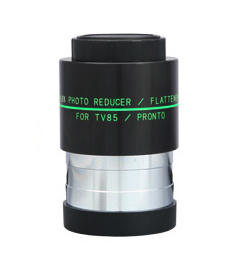
TV-85 Focal Reducer
Model TRF-2008 0.8x Reducer/Flattener converts my TMB f/6 into an f.4.8 and flattens the field to boot. Fully multi-coated 3-element unit inserts directly into 2″ focuser, accepts standard T-rings for connection to the colour wheel of the SBIG. I had to add a 10mm spacer to position the reducer the exact distance to the chip for optimum performance. At the time this was a less expensive option to TMB’s offering.
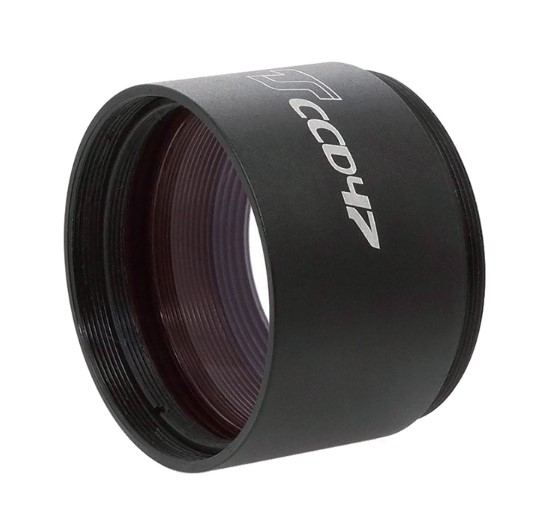
TS-CCD47 Focal Reducer
A 0.67x Reducer/Flattener converts my 254mm F/8 Ritchey-Chrétien into a 1346mm f/5.3. Unlike most other reducers the sensor to FR ranges between 70-90mm. I settled on 70mm after some testing on edge star shapes. As an aside I found using some adjustable length T2 adaptors make fine tuding of spacing distance a doddle. The only place I could find these was from Teleskop-Service in Germany.

Eyepieces.
As my astronomical interest started with imaging, I never spent much time looking through my scopes, so have ended up with the eyepieces I have, without really thinking about the quality of the glass I was looking through. My main eyepieces are as follows
- Televue 6mm Delos
- Televue 10mm Delos
- Televue 14mm Delos
- Meade Series 4000 9.7mm Plossl
- Meade Series 4000 26mm Plossl
- Meade Series 4000 40mm Plossl
- Meade Series 4000 18mm Super wide Angle
- Meade Series 4000 Plossl 9mm Illuminated Reticle
- TMB 4mm Monocentric Planetary
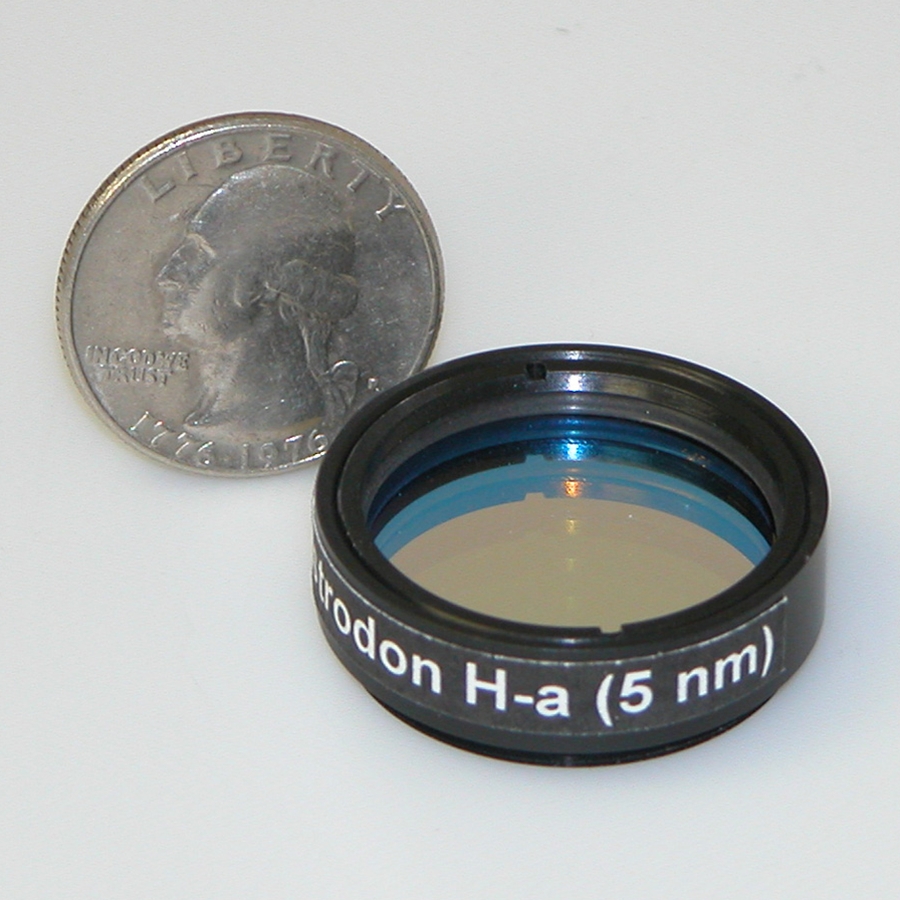
Filters
- Astrodon 6nm H-alpha. It looks like these are no longer being made as of 2013, but a 5nm is.
- ND 96 Moon Filter (0.9 density; 13% transmission):
- #23A Light Red (25% transmission):
- #12 Yellow (74% transmission):
- #58 Green (24% transmission):
- #80A Blue (30% transmission):
- Meade Broadband Nebular Filter:
- SBIG RGB Imaging Filter Set: 1.25″ Custom Scientific RGB+Clear Filter Set (IR blocked except clear filter, all AR coated, mounted in threaded cells)
- Astronomik 2″ UHC
- Astronomik 2″ OIII
- Orion 2″ 13% ND
- Baader H-Alpha 35 nm narrowband imaging
- Astronomik SII 12nm narrowband imaging
- Astronomik OIII 12nm narrowband imaging
- Astronomik ProPlanet 742nm IR -Pass filter
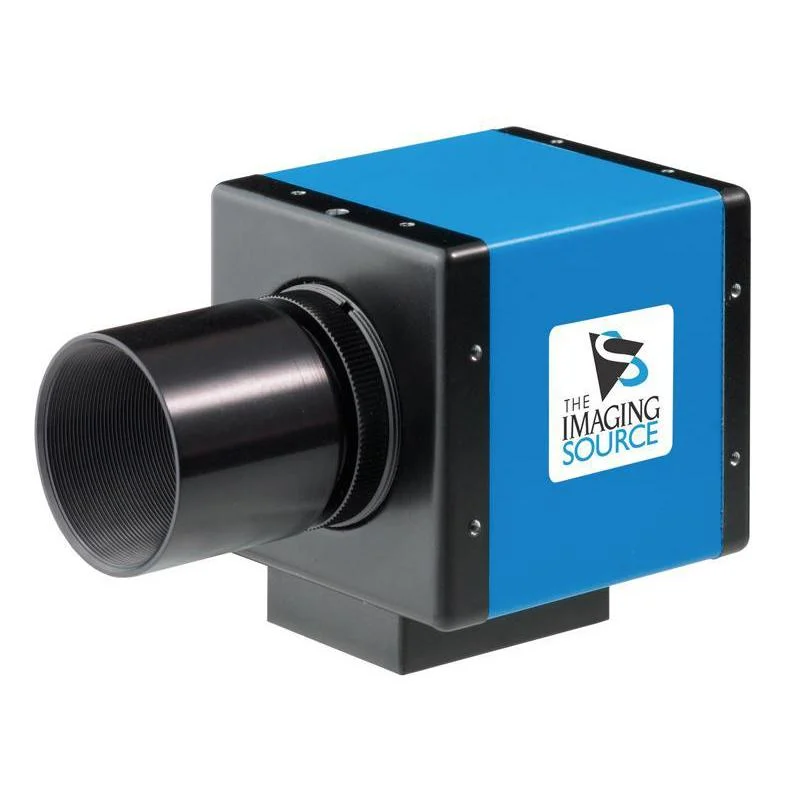
DMK21AUG618 Webcam
The astronomy camera DMK 21AU618.AS outputs up to 60 monochrome images per second. It is therefore ideally suited to methods in astrophotography that require high frame rates such as planetary and lunar imaging. The 1/4″ Sony ICX618ALA outputs at 640×480 pixels and does not contain any kind of IR filter. This allows the use of narrow passband filters for mono and colour imaging.
I’ve found that dust on the sensor glass can be a real problem. The dust particles are too small to be seen visually and trying to stuff a cotton bud with lens cleaner is likely to scratch the glass. The trick seems to be to screw in a clear filter into the nosepiece after thoroughly cleaning and dusting the area first. That way any dust collecting on the filter can be easily removed. This should keep out the crap out , but I’m not sure if the semi sealed system with cause condensation problems.